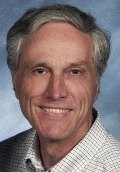Obituary of James Harper (1946-2011)
DOI: 10.1063/PT.4.1763

James Harper, a pioneer in ion beam modification of thin films and Emeritus Professor of Physics and Materials Science at the University of New Hampshire, died on 4 October 2011 after a long struggle with liver disease. Jim was born near London, England, on 10 November 1946. A decade later he immigrated to the United States with his family. In 1968 he earned his BA in physics from Harvard University. He taught physics at the US Coast Guard Academy in New London, CT before going to Stanford where he obtained his PhD degree in Applied Physics in 1975, in the record time of only 15 quarters. He spent the following 28 years, including 20 years as Research Manager, at IBM’s Research Center in Yorktown Heights NY. In 2003 he joined the Physics Department at the University of New Hampshire (UNH) with a joint appointment as Director of the Materials Science Program. In 2010 he retired as a result of his deteriorating health.
At Stanford Jim was an early member of the tight-knit and productive research group headed by Ted Geballe. He improved the techniques for measuring heat capacities in very small samples and made thermodynamic measurements of the competitive ordering between the ground states of a series of one and two-dimensional systems. His quantitative investigation of the martensitic and superconducting transitions in Nb3Sn remains unique today.
Jim’s initial project at IBM was in collaboration with Jerry Cuomo (IBM) and Harold Kaufman (Colorado State University) on the development and application of broad-beam ion sources to thin film materials. Jim became a principal originator of the Ion Beam Assisted Deposition (IBAD) process which involves ion beam sputter deposition and the modification of materials by in-situ ion bombardment; the work culminated in a seminal paper in the Journal of Vacuum Science and Technology. Collaborating with a former colleague, he helped to transfer the IBAD technology to Stanford where it has been fruitfully applied to the growth of High Temperature Superconductors.
In the 1990s, Jim worked extensively on the development of copper interconnects using a Damascene-like integration approach. He investigated and characterized a unique recrystallization effect in electroplated copper, where films grown on sputtered seed layers underwent significant grain growth at room temperature, resulting in reduced resistivity and increased electromigration resistance. His group developed a unique in-situ x-ray diffraction system at the National Synchrotron Light Source of the Brookhaven National Lab, which led to countless developments in the understanding and tailoring of thin film metal materials, such as silicides, copper alloys, and metal gates.
At UNH Jim continued his studies of ion beam modification of thin film deposition which have lead to greater understanding of grain alignment in film growth and have been widely applied to micro-electronic applications. IBAD is one answer to the demanding requirement of the ceramic cuprates requiring biaxial alignment on flexible metal tapes over lengths of many kilometers. This technique is in production at four commercial companies and in R&D at a number of organizations worldwide. Jim was a member of the APS, the Materials Research Society (MRS), and the American Vacuum Society (AVS).
At the MRS he organized several symposia and was Program Chair of the 1994 Spring Meeting. He was active in the AVS as a Trustee, Director, vice-program chair, Thin Film chair, and in many other roles. An annual graduate student award is being offered by the Thin Film Division in Jim’s honor. He served on External Review and Advisory Boards at the Semiconductor Research Corporation and several universities in New England.
Jim authored over 200 articles, wrote over 50 patents, and received numerous awards, including the first Ross N. Tucker Memorial Award of the American Institute of Mining, Metallurgical, and Petroleum Engineers in 1974, the 1985 IBM Outstanding Innovation Award for ion beam inventions, the 1997 John A. Thornton Memorial Award of the AVS, the 2001 IBM Corporate Award for metal silicide inventions, and in 2002 the 16th Invention Achievement Award. He was Fellow of the AVS. Jim was a superb mentor and instructor. At IBM he mentored countless young employees who would go on to be leaders within IBM, as well as many undergraduates from several universities.
At UNH he was respected and admired by his students and colleagues alike. He designed a new course, Electronic Properties of Materials, that attracted students from Chemistry, Electrical Engineering, Materials Science, Mechanical Engineering, and Physics. He would take students of the course on tours through labs of the semiconductor industry in New England. His research advisees lauded him for his constant motivation and encouragement. They recall Jim saying, “If you find yourself stuck, think of the most important part of the word research. You must search and search and search again.” His family and friends have established the Professor James M.E. Harper Fellowship to provide an annual award to a UNH Physics graduate student.
Jim was an outdoor enthusiast with a passion for being out on the water in small boats. He met his wife, Beryl, during a college sailing regatta in 1969. They owned a cabin on Maine’s seacoast where they enjoyed kayaking and sailing in the summer. Jim invited friends and his students to go sailing on the Great Bay nearby. He enjoyed singing in church choirs, and took great pleasure in the camaraderie of the bass section. Jim and Beryl were gracious hosts; their home in Durham, NH provided ample room for social gatherings. Jim will be remembered by his students and numerous friends and colleagues in industry and academia for his scientific accomplishments, unlimited willingness to help, kindness, quiet humor, and unfailing spirit of exploration and adventure.
Olof Echt&Karsten Pohl (UNH), Theodore Geballe and Robert Hammond (Stanford), Richard Howard (Lucent Technology, retired), Stephen Rossnagel (IBM), Robert Schwall (NIST)